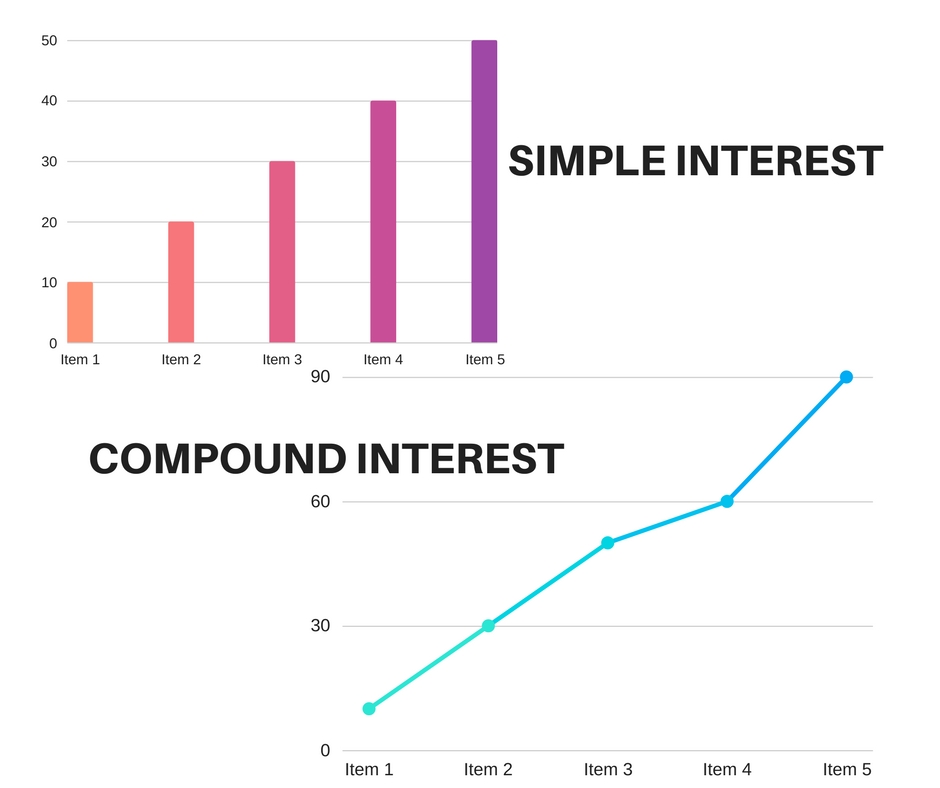Simple vs Compound Interest
- 19 April 2017 | 1463 Views | By Mint2Save

Lending and borrowing money has always been an essential part in humankind unity and kindness. But nothing in this modern world comes for free. The added benefit which the lender gets is, in very plain words, known as the Interest.
Getting into technicality, we usually talk about financial Interest.
Interest is indeed the payment from the borrower to the lender of an amount above repayment of the principal sum (Principal sum is the original or initial amount borrowed). In other words, we can say it is the cost of borrowing money. So now as we know what Interest is, let us move to the type of Interests. Basically, there are two kinds of interests. Which one to choose?
The choice of the type of Interest completely depends on the organization lending the money. However, Compound Interest is more profitable for the lender because it allows the lender’s Investment to grow at a higher rate as compared to Simple Interest.Simple Interest is more beneficial for the borrower as compared to Compound Interest.
Now the question arises, how? You will understand when we get into detail. For now, we are clear –
Look for those investments that allow compounding.
Need to borrow money? Prefer Simple Interest based loans (rare case, though).
How do they work –
As their name suggests, Simple interest is easier to understand and simple to calculate in comparison to compound interest.
SIMPLE INTEREST –
Is when the interest is only charged on the principal amount, that is, the original amount of the liability or investment. Assume a case, if you deposit money into a bank account that pays simple interest, it will only pay you the calculated interest based on the original deposit amount (called principle amount). It will not pay interest on the additional money in your account that came from its interest payment previously. The Interest amount is fixed as long as the principle amount is fixed and does not vary with time.
An example will make it clear –
Assume that you deposit $2000 into an account that pays a simple interest at 8.5% per annum. After a year, the bank will pay you $170 in accordance with the calculation in it. So now you have $2170 in your account. After another year, you will again receive an interest payment, but only on the original $2000 principal amount, and not on the $2170 that is now in your account.
COMPOUND INTEREST –
Is when the interest is calculated on the principal amount and also on the accumulated interest of former periods, and can thus be regarded as “interest on interest”.
In other words, in case of compound interest, interest is paid on both the original principal amount and on interest received on it. In case if you make a deposit into a bank account that pays according to compounded interest, you will receive interest payments on the original amount that you deposited as principle amount, as well as additional interest payments.
Illustrating the same with an example –
You are depositing $2000 to a bank account that pays 8.5% annual interest. But in this case, assume that the interest is compound interest. Now, after a year, your account would increase by 8.5% to $2170. In the second year you would be paid interest on the total in your account, that is, $2170. In other words, your principal amount for the second year is $2170.
By examples we can conclude the following statement –
“The compound Interest starts to become greater than simple interest after the first interest period”, be it annually or monthly.
KEY DIFFERENCES –
- The interest charged on the principal amount for the entire period of loan is called Simple Interest. The interest charged on both principal and also the previously earned interest is called Compound Interest.
- Compound Interest yields a high return as compared to Simple Interest.
- In Simple Interest, the principal amount remains same whereas in Compound Interest the Principal amount changes due to the compounding effect.
- The growth rate in Simple Interest is lower as compared to Compound Interest.
- Simple interest is easy to calculate whereas calculation of compound interest is comparatively complex.
The Rate of Interest plays the key role in deciding the interest amount. So, we need to know who decides this rate. They are generally determined by the market, but sometimes government interventions can strongly effect short-term interest rates.
Thus, Understanding the difference between simple and compound interest is very essential when you are trying to find the right loan or find the best place to invest your savings, so as you do not drop a chance of future saving. And now, as the concepts are clear,Go on. Make money and use that money to make more money.









